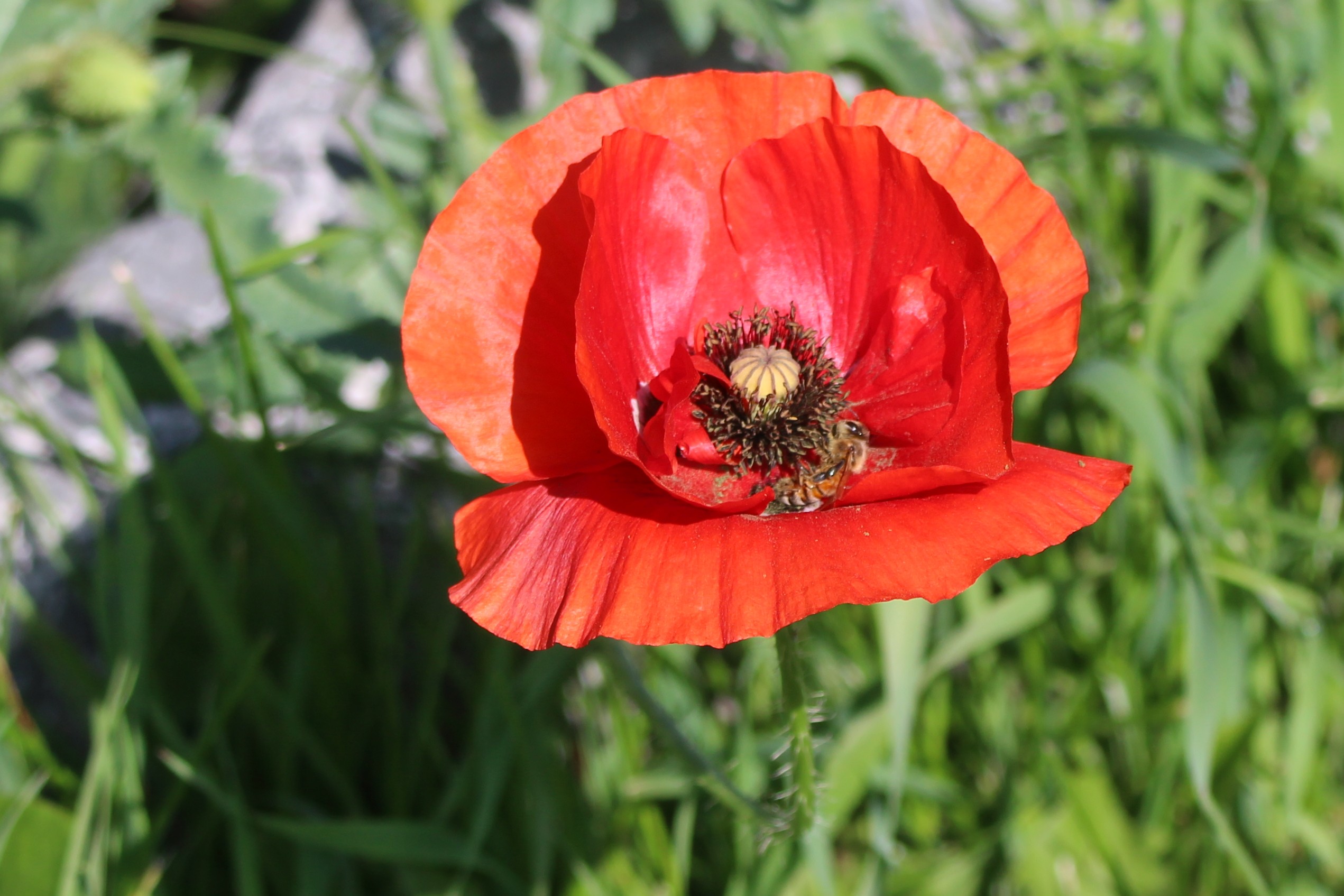With a global population of over eight billion people, one may indeed wonder what impact a lone individual could possibly have on insect populations. One may also wonder what the agricultural industry could do improve the survival of insect life, so key to rescuing insect numbers and in turn helping bird populations.
If one is fortunate to have a yard, a combination of actions that can improve the environment for insects and birds as well as conserving water. Reducing the size of a monoculture lawn may reduce water demands, especially if native plants replace the lawn. Such plants are adapted to better survive as well as provide food and shelter for insects. Buying or building insect hotels can help insects such as the solitary bee, the ladybug, hoverflies, earwigs and beetles. Some of these insects do consume aphids and even slugs and can help gardens. Moving away from a completely manicured yard by creating diverse landscapes may help insect survival as well. Leaving leaf litter and fallen branches, and including shrubs in a yard “design” may help insects successfully overwinter.
As a consumer one can consider purchases of pesticides which do harm beneficial insects and contaminate habitats. In buying produce or purchasing plants and trees from nurseries, check to see if neonicotinoid pesticides have been used in their growth. Studies indicate that light pollution can be deadly to nocturnal insects. Simply turning off lights or using amber or red bulbs can reduce the pressure on insect life.
Farmers have a great challenge in producing sufficient enough crops to cover the significant operating costs of farming operations. Production in terms of increasing average yields per acre is always a concern and putting a few dollars in the bank to sustain the business and family is no doubt a goal of every farm. In Alberta, strategies that are encouraged are highlighted under an Integrated Pest Management program. To reduce infestations by harmful insects, the province supports the use of crop rotation, planting resistant varieties, keeping equipment clean to prevent pest spread and developing habitats for beneficial insects as well as other organisms that can help control pest populations. Regular pest monitoring of fields to determine if a pest has reached a population threshold before applying targeted applications of pesticides can help reduce costs as well as reduce harm to beneficial insect life. An integrated plan can in the long term, provide long-term pest solutions, protected the environment and human health, slow down the development of pesticide resistant insect populations and minimize harm to those insects and organisms that naturally control pests.
Odd as it may sound, increasing the population of insects can not only improve bird numbers, but also ensure that our pollinators continue to do their work for us, increasing the likelihood of putting food our tables. Although some species can truly be a nuisance in our lives, imagine a world without insects.
I’d Hate To Bug You, But ….. (Part Two)

In response to Canada's Online News Act and Meta (Facebook and Instagram) removing access to Canada's local news from their platforms, Anchor Media Inc encourages you to get your news directly from your trusted source by bookmarking this site and downloading the Rogue Radio App. Send your news tips, story ideas, pictures, and videos to info@anchormedia.ca.





